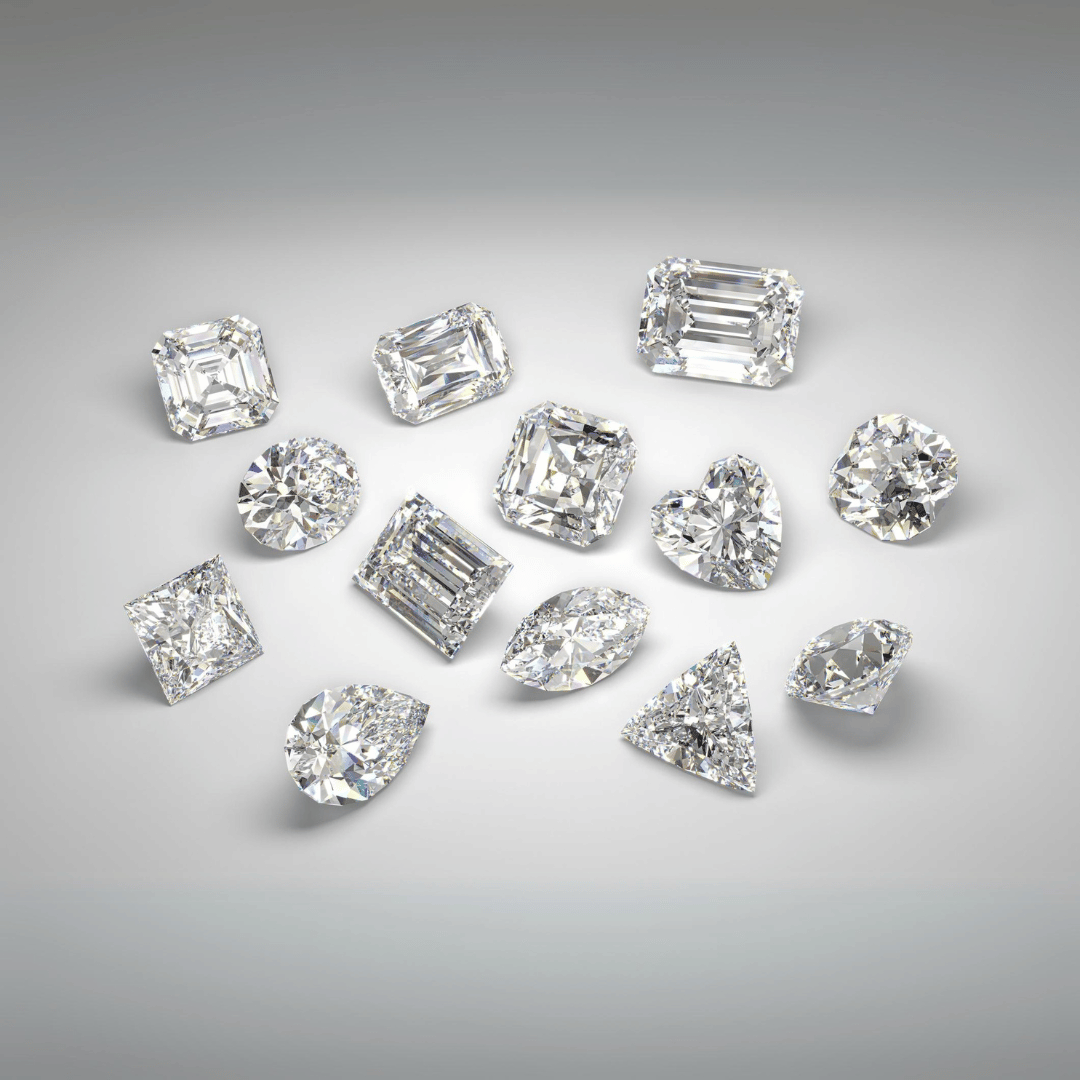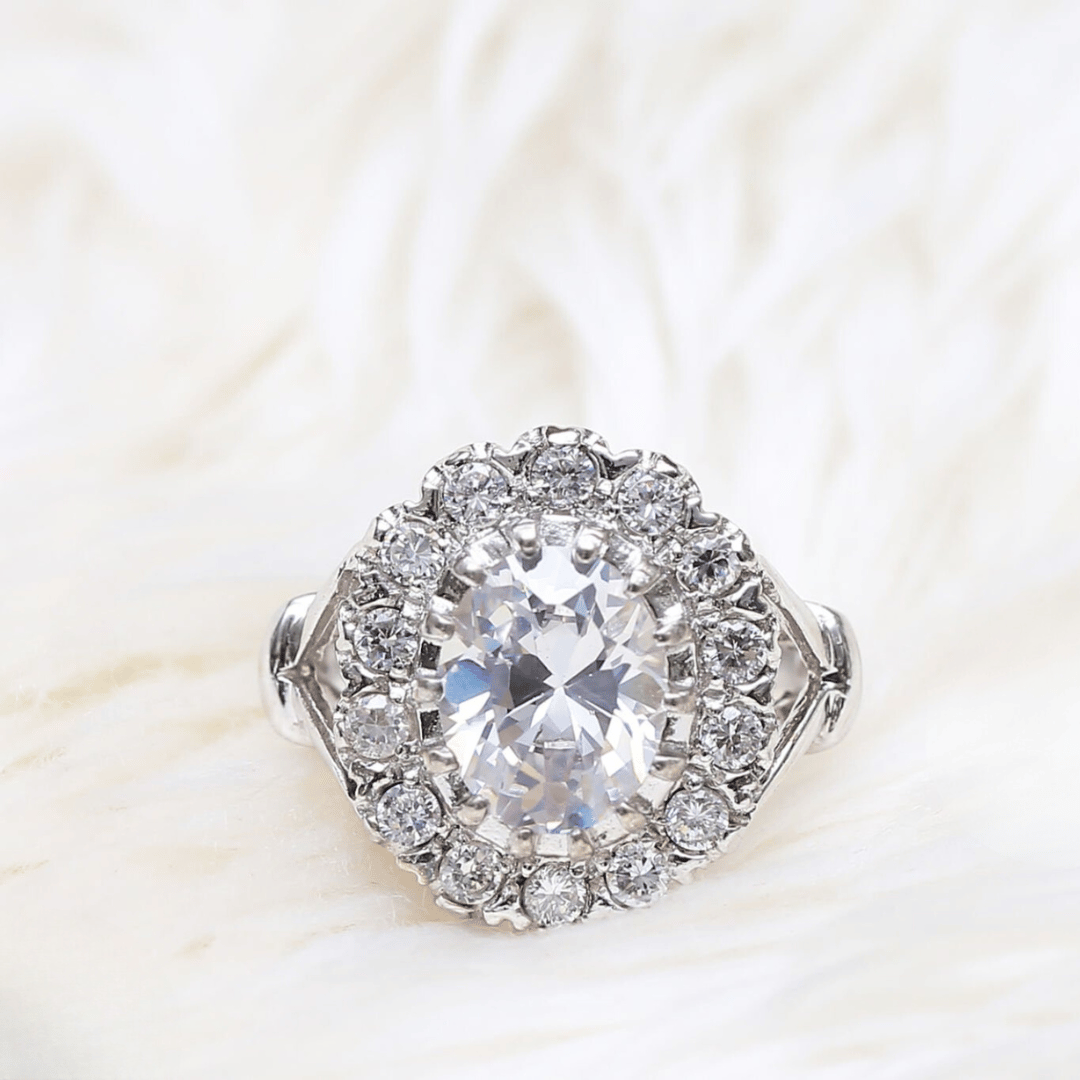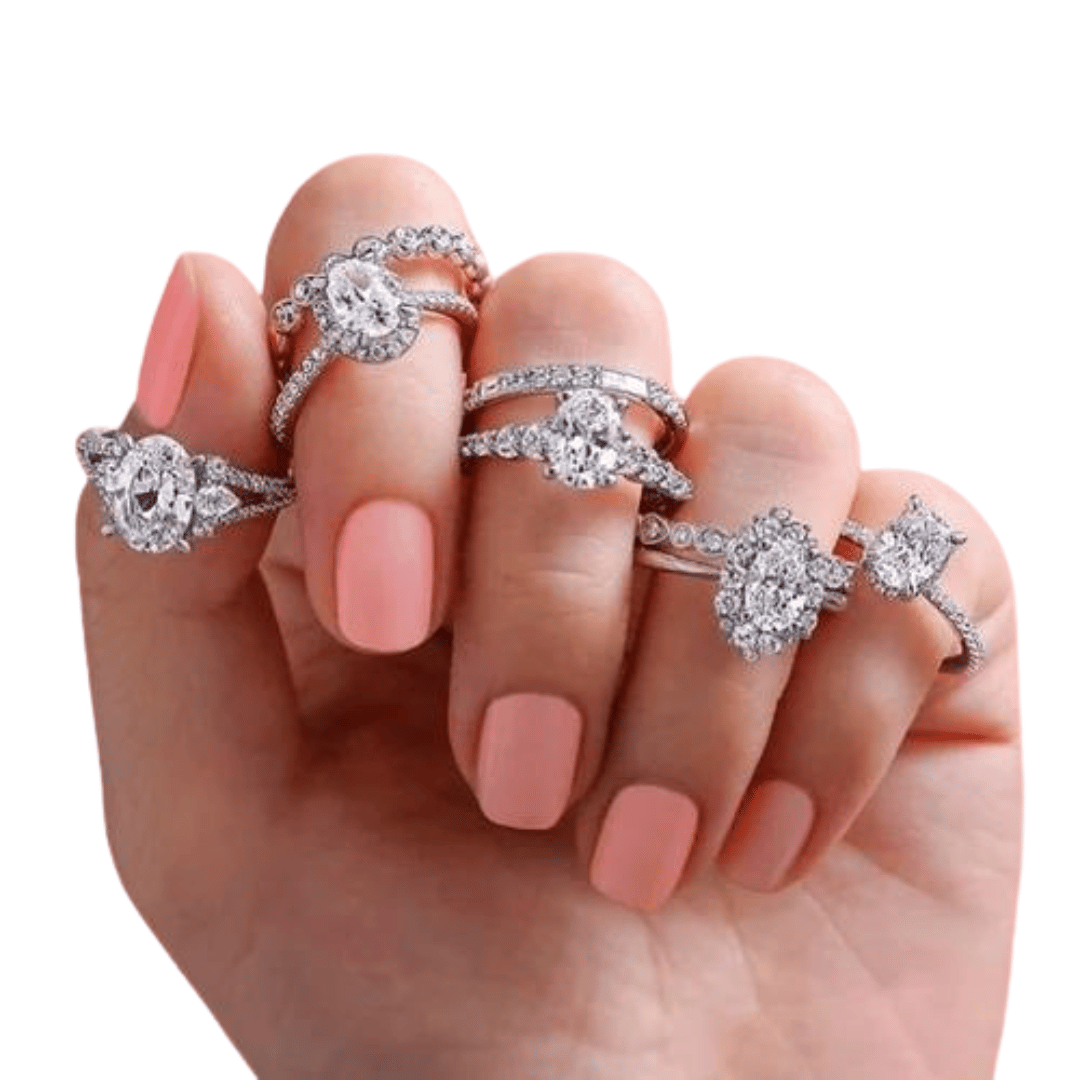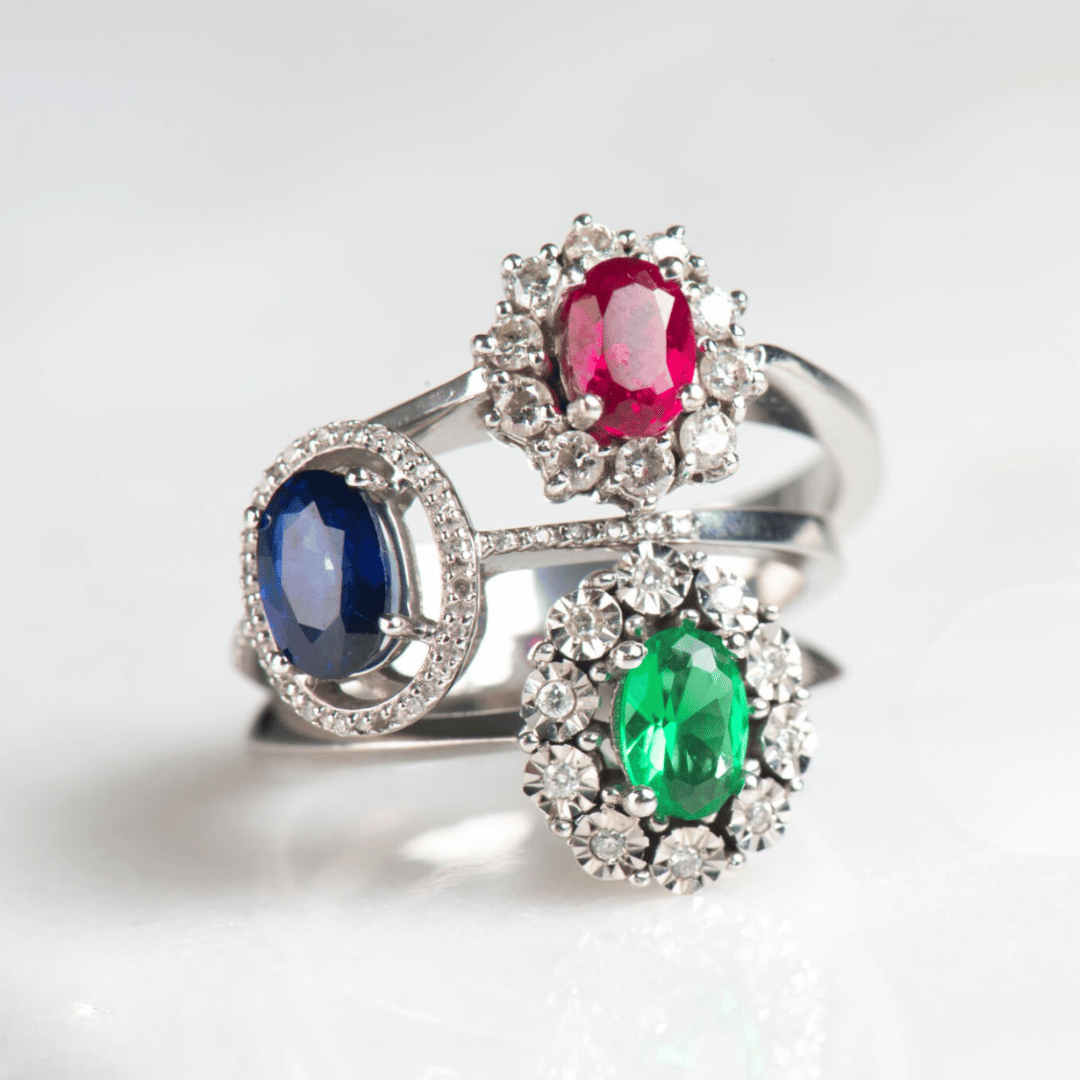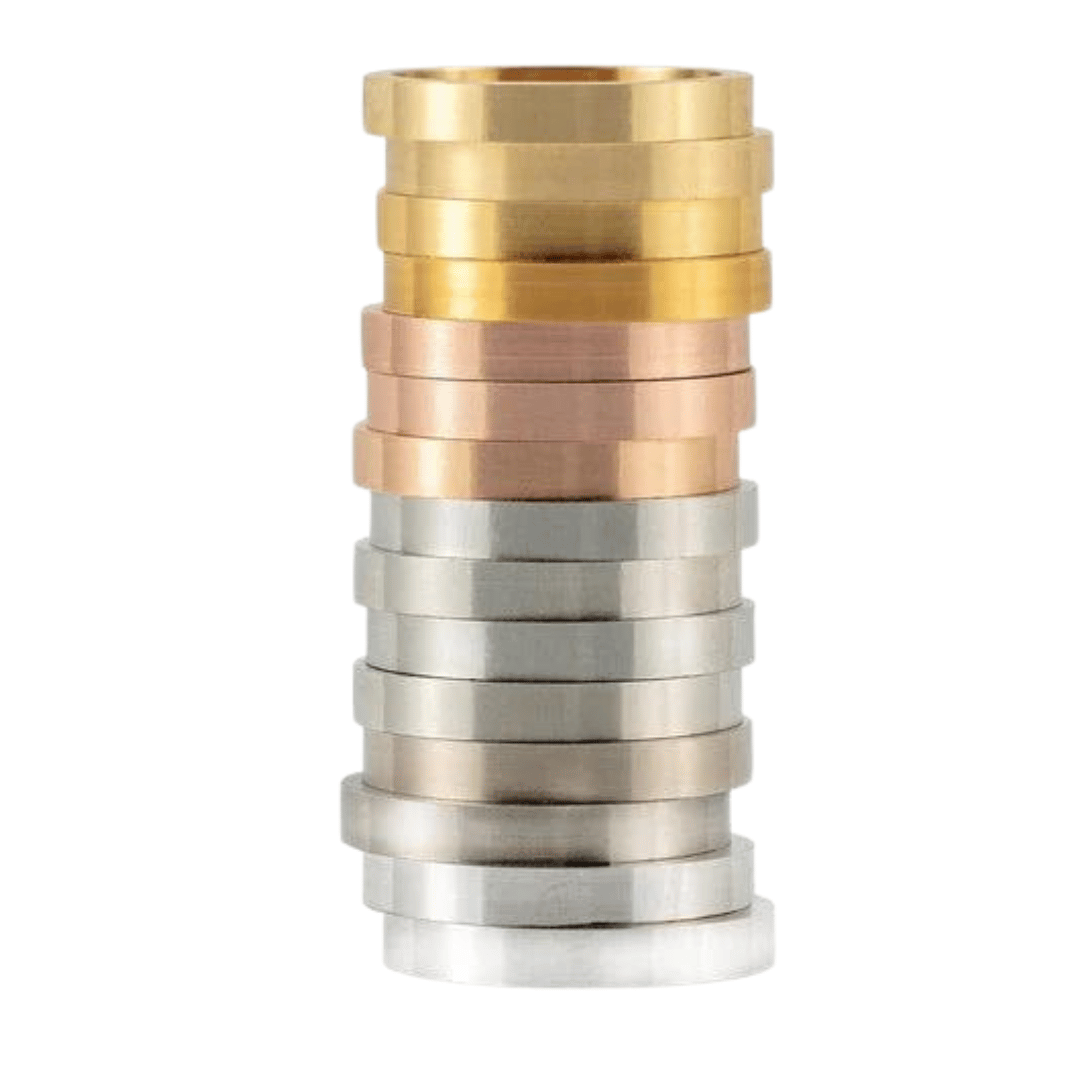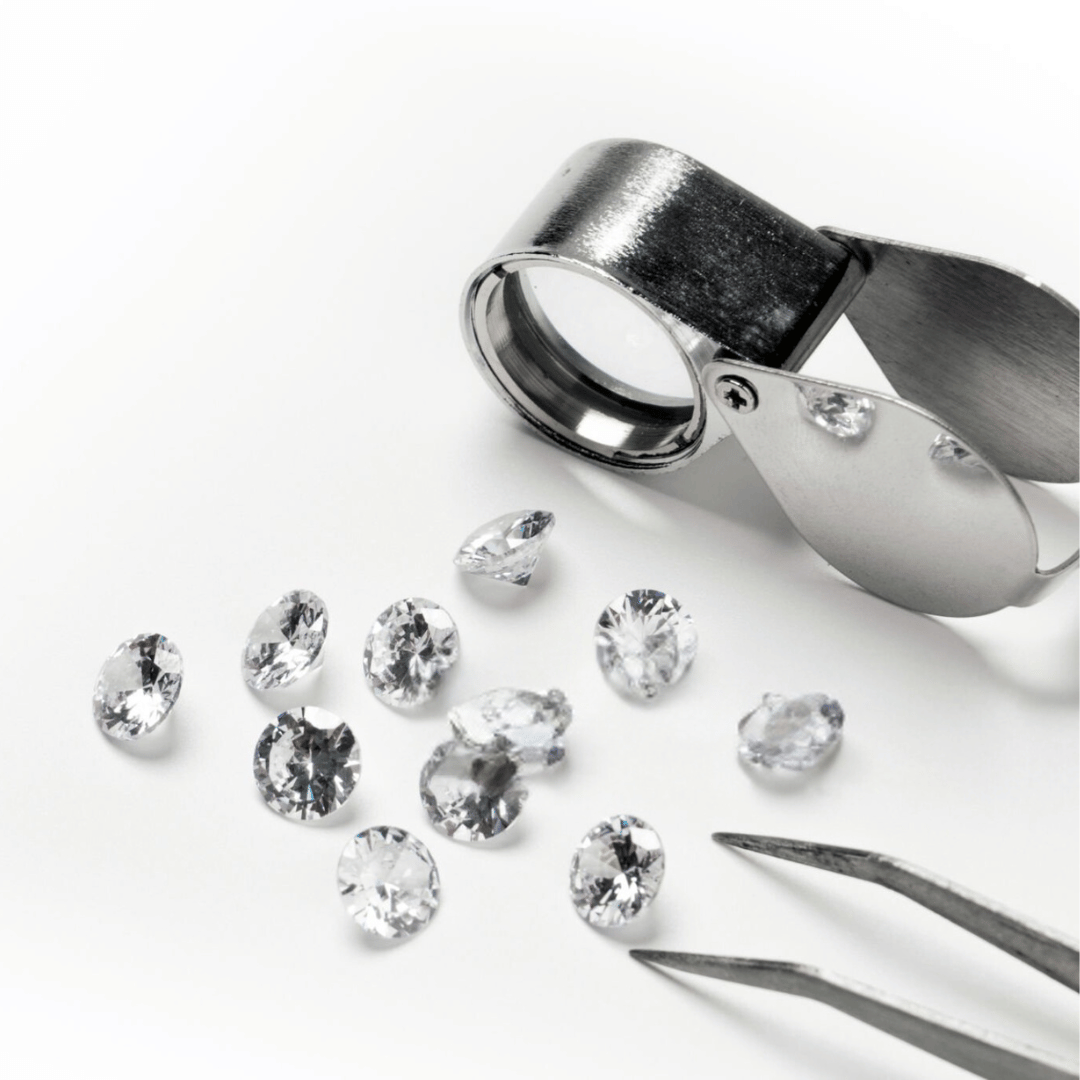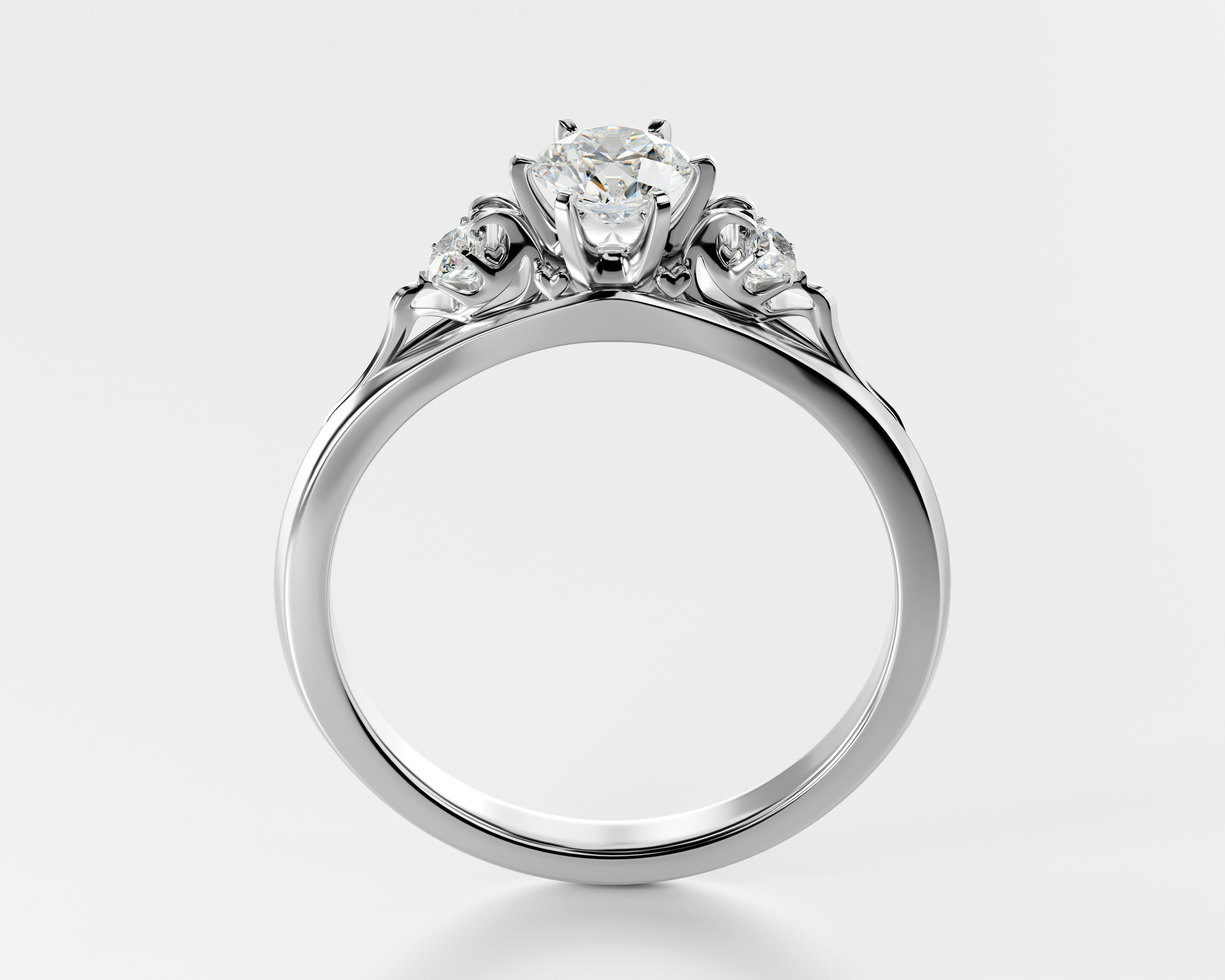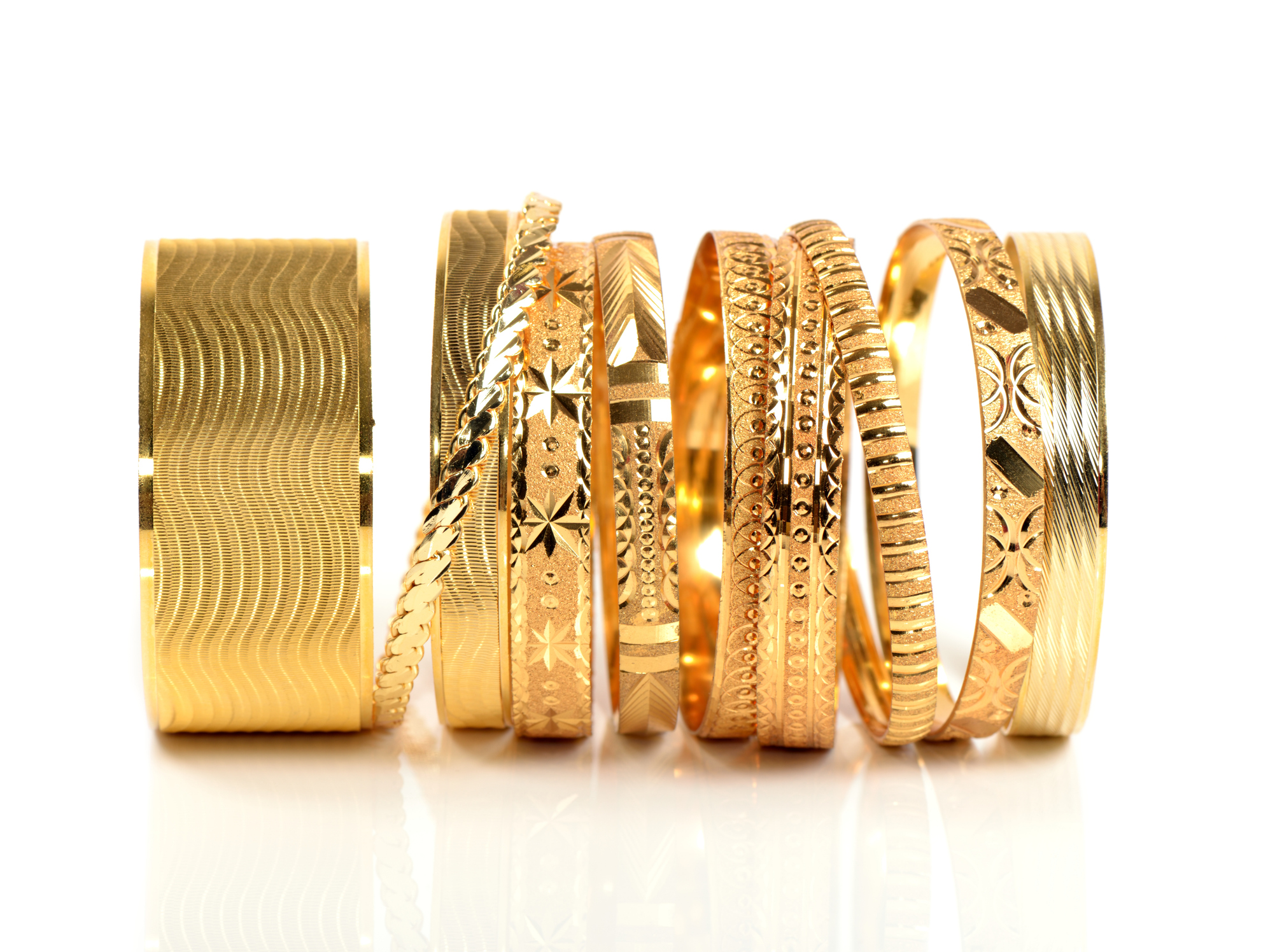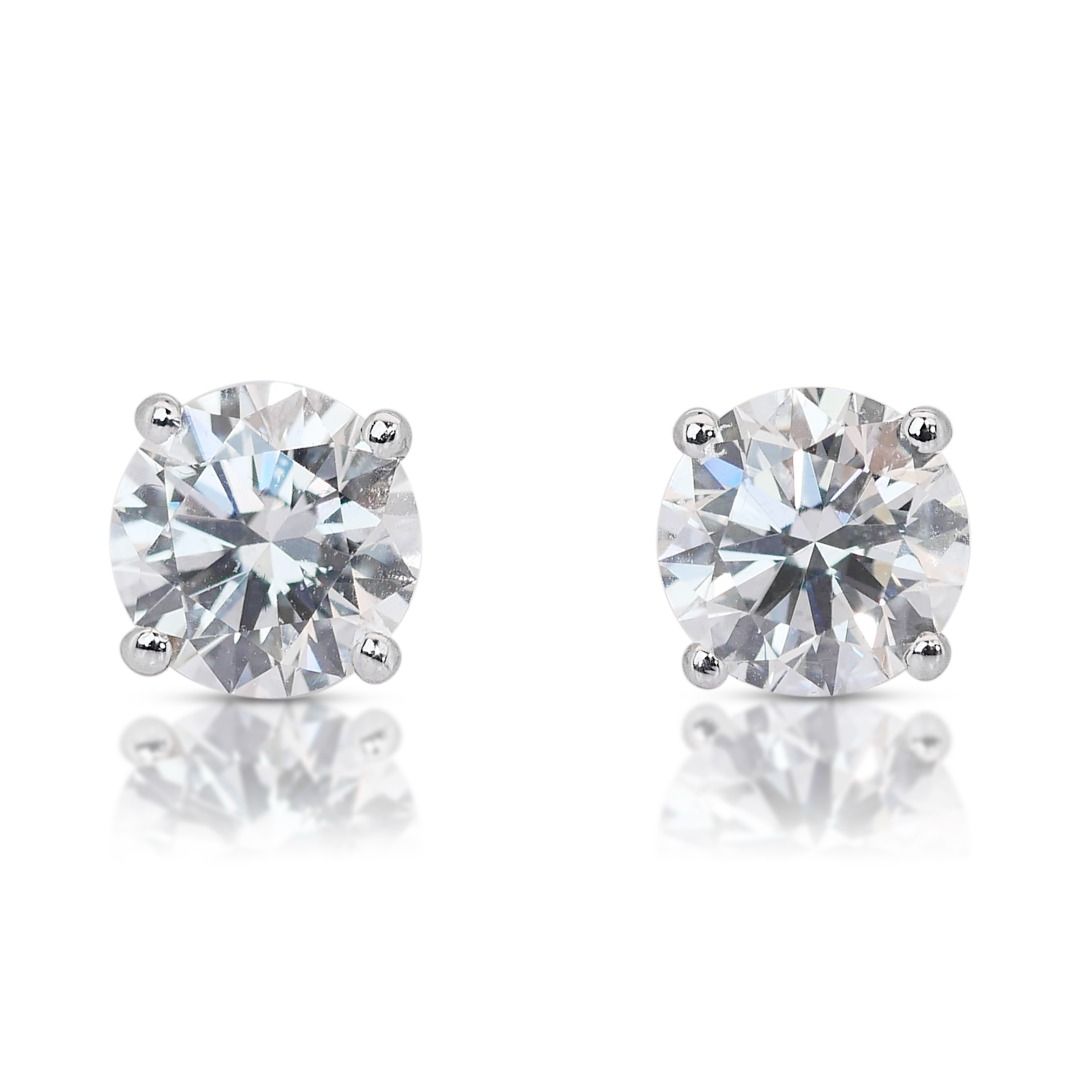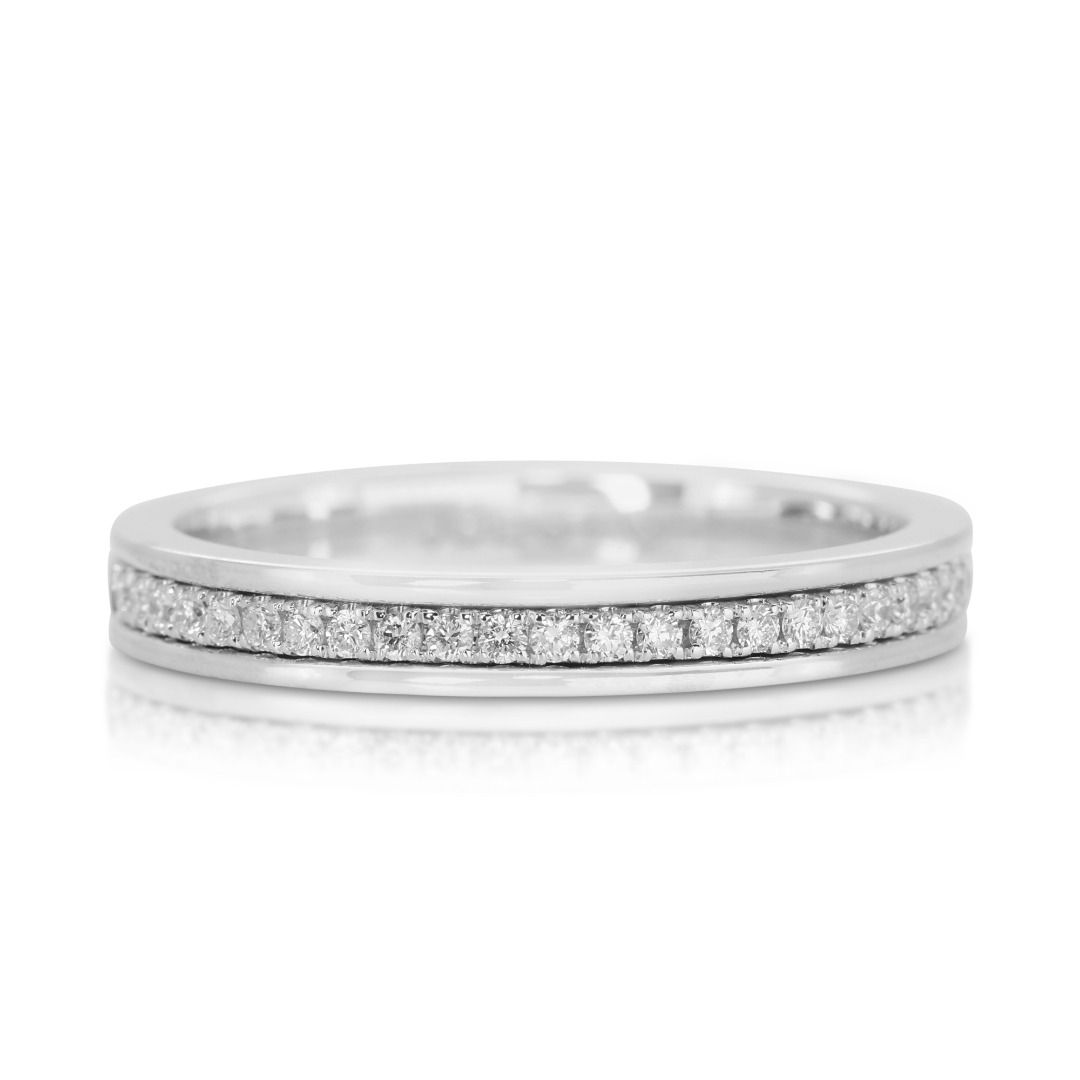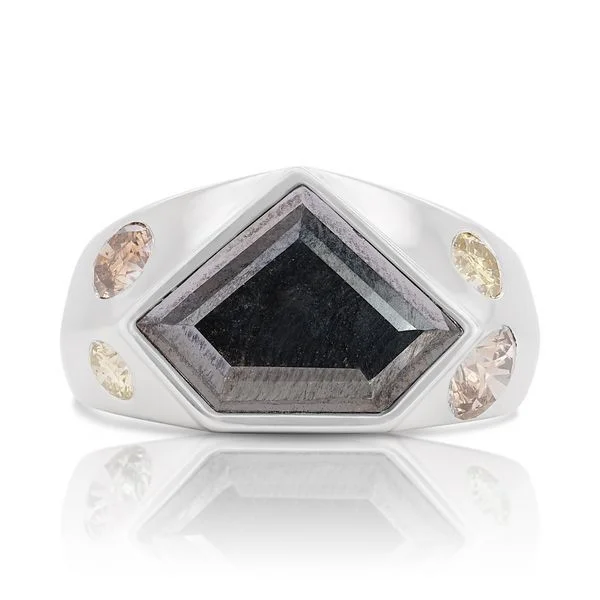Diamond Shapes
Diamond Shapes
Key Highlights:
Popular Fancy Cuts:
- Princess: Square or rectangular shape, good sparkle, relatively low material waste.
- Cushion: Rectangular or square with rounded edges, vintage look, various styles available.
- Tear-drop: Elegant and elongated, good for pendants and earrings.
- Oval: Elongated shape with good sparkle, may appear flat.
- Marquise: Very elongated, classy look, can show a “bow-tie” dark area.
- Emerald: Rectangular with step cuts, large table, elegant and antique look, inclusions more visible.
- Asscher: Similar to emerald cut with smaller table, unique square-in-square appearance.
- Radiant: Rectangular with modern polish, good for those who prefer a rectangular shape without step cuts.
- Heart: Romantic design, various shapes available, symmetry is crucial.
- Triangle: Unique and uncommon, mostly used as side stones, various designs with sharp or rounded tips.
Tips for Choosing a Fancy Diamond:
- Consider the design and choose a model you like.
- Pay attention to the surface area, some fancy cuts may appear small.
- Compare several diamonds of the same cut to find the best option.
- Be aware of specific considerations for each cut, like symmetry or “bow-tie” effect.
The most common diamond shape these days is ROUND BRILLIANT.
This is a round shape with 57 sides.
This cutting shape in its modern form started a quarter-century ago and in recent years it is becoming hard to find round diamonds that are cut differently.
Important to know!
- Round diamonds are the most shiny
- Apart from round cutting, the most popular cutting shapes are cushion, princess and oval.
- According to most, diamonds in different shapes don’t have CUT value and its polish quality is determined only by POLISH and SYMMETRY values.
- In most cases, diamonds in different shapes are cheaper than round diamonds.
- A coloured diamond is also a good choice
The reason that the polish of round diamonds is so specific is the scientific development in the diamond field.
Nowadays we have computers and other technologies that allow us to find the best way to produce diamonds with maximal light reflection.
This ability produced a new standard in diamond polish and has put the old polish techniques to a whole new level of scientific precision.
Surely, the round diamond is the ideal diamond in term of light reflection but there are many other cutting styles with various shapes and their own unique features
Non-round diamonds are cheaper than round diamonds and have their own price list.
All non-round diamonds are called “FANTASY” diamonds in the diamond industry.

The key to choosing a Fantasy Diamond is the wide variety of designs available for each model.
For example, a tear-drop diamond may be very long and narrow or short and wide or different in all kinds of ways.
In addition, it is important to notice that the diamond is not too rubbery in shape or too thick in comparison for its surface area.
In most cases FANTASY diamonds don’t have CUT grading and therefore it is not always possible to have all the technical information about the diamond model.
According to this fact it is extremely important to compare a few different FANTASY diamonds to make sure your pick is the best option.
Please notice, this article is used as a review of cutting styles.
It is possible to investigate specific cutting styles before purchasing a diamond.
Princess Diamonds
These diamonds are square shaped diamonds with all sides of equal length or sometimes rectangular.
This is in fact the most popular design of FANTASY diamonds.
This style started during the 60s of the previous century and was perfected through the 70s.
The great advantage of princess diamonds is the relatively low loss of materials due to the pyramid shape of the diamond that may allow polish of 2 diamonds.
In addition, the structure of princess diamonds provides a larger surface area than round diamonds and therefore looks larger.
Important tip: it is very important to inlay princess in a way the teeth that hold the diamond sit at the tips of the diamond.
Any other inlay technique that doesn’t cover the sharp tips may cause pilling of a layer from the diamond.


Cushion Diamonds
This is the most popular cutting style in the fashion industry and magazines.
It is not a surprise due to the rising vintage trend.
This style of cutting is over 200 years old and was the most popular at the beginning of the last century.
Today it covers the hands of many local and international stars.
This style is characterized by a rectangle or square shape with rounded edges that give the appearance of a cushion, hence the name.
It is considered to be quite sparkly for FANTASY diamonds and has three main modalities to choose from.
The reason for their popularity is the combination of ancient feeling and the modern sparkle.
Important tip: there are many cushion diamonds with a relatively wide girdle that reduces their surface area. Keep it in mind while choosing.
Pear Shape Diamonds
This cutting style combines round polish and marquise polish.
These diamonds are especially popular as pendants and earrings due to their elegant and elongated shape.
When inlay in rings they produce the appearance of thinner and longer fingers.
While choosing, you should keep in mind that the diamond shoulders are round as in round diamonds and not flat as in rectangle shaped diamonds.
Important tip: symmetry is an important parameter while choosing a tear-drop diamond.
Notice that the tip of the diamond is inline with the middle of its shoulders.


Oval Diamonds
An additional elegant and elongated cut is the ovale cut.
This cut is based on the modern cut of round diamonds.
It preserves the sparkle to a high extent (although still less sparkly than round diamonds) and gives a more interesting and unique design.
In many cases the oval diamonds are relatively flat so their surface area looks larger.
Thus, if their polish is not successful they might look rubbery.
Important tip: with elongated diamonds, especially oval diamonds, there is a phenomenon of bow-tie shape inside the diamond.
This is a relatively shaded area.
In terms of value the bow-tie may embellish the diamond or give it a dark gloomy look.
Stay alert while choosing.
Marquise Diamonds
This cut is a rather senior one (18th century) and some claim it was first introduced for madame de pompadour, the lover of Louie the 15th.
The aim of this cut was to mimic the shape of her perfect almond shaped lips.
Either way, it is a very special cut and exclusively classy.
In most cases it is thin and elongated and therefore gives the illusion of large size.
Here as well the bow-tie phenomenon may take place.
Important tip: be careful and make sure the edges of the stone are always enclosed or coated with a gold rim.
Usually the tips are very sharp and therefore the risk of damage is extremely high.


Diamonds with Emerald cut
This cut is very old and originates from the cut of an emerald gem.
In most cases it has a rectangular shape, but it may be square shaped as well.
The cut is in a stepwise manner instead of sides, which was easier in gems due to their tendency to have many inclusions.
Step-wise cuts provide a large table with a terraced rim around it.
The appearance and light reflection of these diamonds are very different from the modern “brilliant” cutting styles but considered to be very elegant and with an ancient spirit which is very popular today.
Important tip: due to the fact that we are talking about stepwise cutting with a large table, we must watch out while choosing clarity grade – it is easier to see inclusion with the naked eye with this cut.
Asscher Cut
This cutting style was developed during the 20th century in the Netherlands by two brothers with this last name.
It is very similar to the emerald cut (but with a smaller table) and is also based on a large table and step-wise manner.
This is very exceptional and has a unique diamond shape.
This cut, when performed properly should produce the impression of a square inside a square inside a square in great depth.
Important tip: once again there is a great importance to clarity and appearance.
In addition, the diamonds should be as close as they can to a perfect square to draw the attention of the observers.


Heart-Shaped Diamonds
This romantic cut began in a non-romantic fashion.
The aim was to cut out rough inclusions from the diamond and increase its clarity.
Notice that there are many models of heart shaped diamonds – more elongated, wider, etc.
The important point is to choose which model you prefer and make sure the inlay complements the stone and doesn’t hide the heart shape.
Important tip: the symmetry of heart diamonds is of the highest importance.
Be aware that it is harder to reach this symmetry in smaller diamonds (half a carat for example).
Triangle Diamonds
Triangle diamonds are the most unique.
They are going in and out of fashion but are rarely part of the mainstream.
Therefore, they are suitable for anyone who is searching for something different.
They are sold as side diamonds for three-diamond rings.
There are many designs for triangle diamonds and they mostly focus on the form of its sides – but today most are cut as modern “BRILLIANT”. And the tips may be sharp or rounded.
Important tip: many triangular diamonds are relatively flat and large looking.
They are suitable for invisible inlay in which you connect six smaller diamonds to give the appearance of a single 2 carat diamond.


Radiant Diamonds
Most of the radiant diamonds have rectangular shapes but some are squares.
This is the first cut that was polished with the modern radiant polish.
Despite this fact (that reached its current form by the 80s of the last century) it has an ancient appearance.
Due to its severed tips it is relatively safe to inlay.
It is ideal for someone who wants a rectangular shape without the step-wise cut of the emerald.
Important tip: once again you should watch out for the bow-tie effect.
Conclusion
In conclusion, while the round brilliant cut remains the king of sparkle, there’s a whole world of fancy cuts waiting to be explored if you’re looking for something unique. Fancy cuts offer a wider variety of designs and tend to be more budget-friendly. However, they require more careful selection as they may not have a cut grade and some shapes can appear smaller due to surface area. By considering your desired design, comparing multiple options, and being aware of cut-specific quirks, you can find the perfect fancy diamond to add a touch of individuality to your jewellery.


